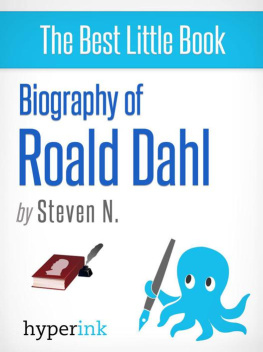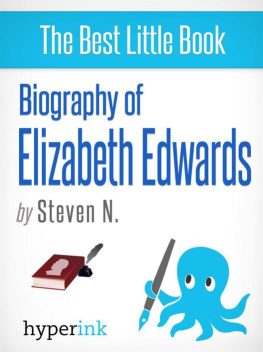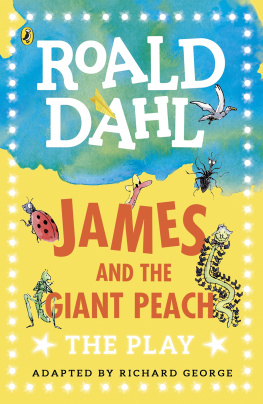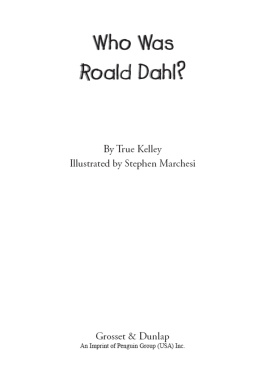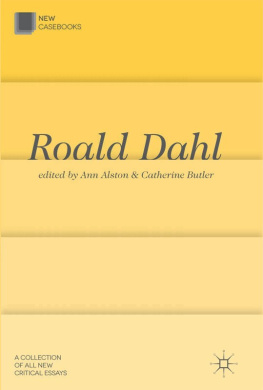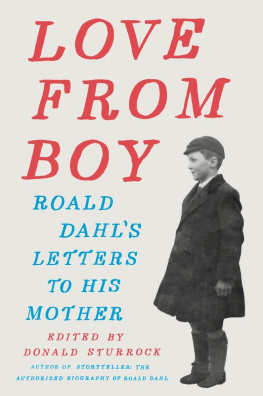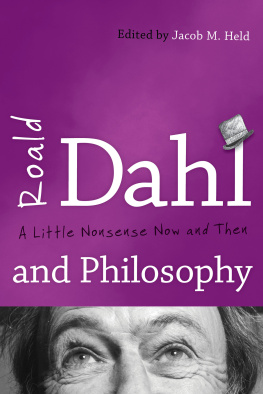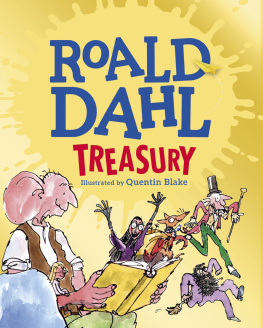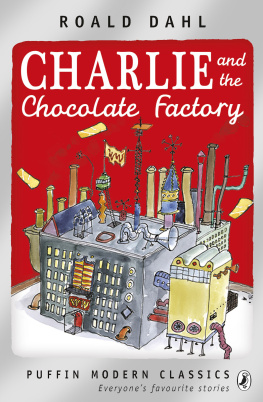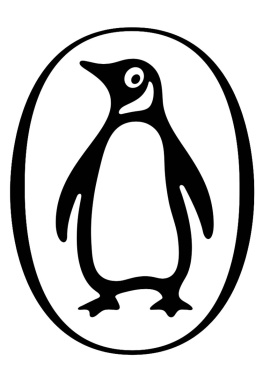Introduction
Roald Dahl is considered by many to be one of the best children's writers of the 20th century. Just a few of his most famous works include, James and the Giant Peach , Charlie and the Chocolate Factory , Matilda , The Witches and The BFG . Dahl was a fantastically imaginative writer, whose characters include a cigar-smoking grandmother and an eccentric chocolate factory owner. The world that Dahl created is both dark and fanciful : terror lurk s in the shadows, but hilarity reign s, a delicious combination that makes Dahls books equally enjoyable for adults and children. In addition to his children's books, Dahl also had a successful career writing short stories for adults that were known for their dark humor and surprise endings.
Roald Dahl was born in Wales to Norwegian parents . Dahl's mother told Norwegian folk tales and legends to her children when they were young, and the sorcery and magic of the stories stimulated the imagination of the young author. Dahl later said that the grandmother character in The Witches was based on his own mother.
Along with books and short stories, Roald Dahl also wrote poetry, screenplays and television episodes. A television program based on his short stories, Tales of the Unexpected , was popular in England during the 1980s. These stories were typical of Dahl's writing style, with macabre humor, sinister characters and surprise endings. He also wrote several episodes of the Alfred Hitchcock Presents , a mystery series that aired in the United States , and a play, The Honeys , that was performed on Broadway in 1955.
Early Life
Harald Dahl and Sofie Magdalene Dahl, the parents of Roald Dahl, were immigrants from Norway who settled in Cardiff, Wales. Harald Dahl emigrated to Wales in the 1880s, and Sofie Magdalene Dahl arrived in 1911. Roald Dahl was born in 1916, and his parents named him after Roald Amundsen, the famous Norwegian explorer . In addition to Roald, Harald and Sofie had three girls, Astri, Alfhild and Else Dahl. Norwegian culture was very important in the Dahl household ; the family attended a Norwegian Church, and spoke their native language at home.
A double tragedy struck the Dahl family in 1920, when their seven - year - old daughter, Astri, died of appendicitis. Only weeks after this devastating event, Harald died of p neumonia while he was on a fishing trip in the Antarctic. He was only fifty-seven years ol d . The death of Roalds sister and father were only the first in a series of tragedies that would befall the writer.
After her husband's death, Roalds mother decided to stay in Wales so that her children could attend British schools , which was very important to their father. The first school Roald attended was The Cathedral School at Llandaff. A precocious child, the eight - year - old Dahl got into plenty of entertaining scrapes, the most exciting of which he later named the "Great Mouse Plot of 1924." In her biography of Roald Dahl , Rachel Baker wrote, "At the age of eight, he and four of his friends (one named Thwaites) were caned by the headmaster after putting a dead mouse in a jar of gobstoppers at the local sweet shop, which was owned by a "mean and loathsome" old woman called Mrs. Pratchett. This was known among the five boys as the 'Great Mouse Plot of 1924 . This was Roald's own idea." Dahl later wrote about this incident in his book Boy: Tales of Childhood .
Following this fantastic prank, Dahl transferred to Saint Peter's in Weston-super-Mare, an English boarding school. Dahl later wrote that he did not enjoy his time at this school, but he did not tell his mother how unhappy he was. He knew that the letters he sent home were read by school officials, so Dahl kept his unhappiness to himself.
Beginning in 1929, he attended Repton School in Derbyshire, where he did well in sports but had academic problems. According to Dahl's own writings concerning this period of his life, a school friend of his named Michael was caned by the headmaster in a horrible beating. Since the headmaster was a priest, the event shook Dahl's faith and trust in religion.
Although he seemed to have trouble in school, the summers in Roald Dahl's life were very pleasant times. Dahl would spend his vacation with his m other's family in Norway. These times created wonderful childhood memories for the author, who would fondly write about his first summer job selling kerosene in the Midsomer Norton village.
After graduation , Dahl began working for the Shell Petroleum Company. In 1936, the company transferred him to Dar-es-Salaam, Tanzania where he lived in luxurious company housing. As World War Two drew closer, Dahl became an officer in the King's African Rifles, and was put in charge of a platoon of indigenous troops. In 1939, he decided to join the Royal Air Force in order to become a pilot.
During his time in the Royal Air Force, Dahl flew many heroic missions. In one of his missions, Dahl experienced a terrible crash that he later believed directly impacted his writing career. In the article, "Roald Dahl: the plane crash that gave birth to a writer," Donald Sturrock wrote , "'A monumental bash on the head' was how Dahl once described this accident in the Western Desert, claiming that it directly led to his becoming a writer. This was not just because his first published piece of writing was a semi-fictionalised account of the crash, but also because he suspected that the brain injuries which he received there had materially altered his personality and inclined him to creative writing." By the time World War Two ended, Dahl had made the rank of Squadron Leader . H is impressive flying career qualified him as a flying ace.
Major Accomplishments and Awards
Immediately after the war, Dahl published his first work, an article titled " Shot Down Over Libya, " in The Saturday Evening Post on August 1st, 194 2. T he first children's book that Dahl wrote, The Gremlins , was also based on his military experiences ; it featured little gre mlin creature s which were part of pilot folklore in the Royal Air Force. The book was immediately successful, and the rights to the book were purchased by Walt Disney.
In 1948, Dahl published his first novel for adults, Sometime Never: A Fable for Supermen . It did not fare well commercially.
Eventually, Dahl decided to focus to writing childrens books, where he had found great early success. In 1961, Dahl published James and the Giant Peach , which quickly became very popular. The first edition was beautifully illustrated by Nancy Ekholm Burkert .
Although the book was a commercial success , critics felt that the storyline was inappropriate for children. They believed that the hero of the book, James, suffer ed excessively terrible things at the hands of his evil aunts, Spiker and Sponge. As a result, James and the Giant Peach has been repeatedly banned by grade schools.
In her article, "Banned Books Week: James and the Giant Peach ," Madeline Holler writes of the maligned book, "I'll admit that when my then first-grader and I sat down to read James and the Giant Peach , right away I felt the urge to shield her. But not from the word 'ass' which comes up frequently. And not because there's whiskey drinking and snuff snorting and child-beating I love that stuff! (I mean, in literature.) What gave me pause were James's cruel guardians Aunt Sponge and Aunt Spiker."
During the next twenty years of his career, Roald Dahl wrote prolifically, publishing The Magic Finger i n 1966, Fantastic Mr. Fox in 1970, Danny: The Champion of the World in 1975, My Uncle Oswald in 1979,

